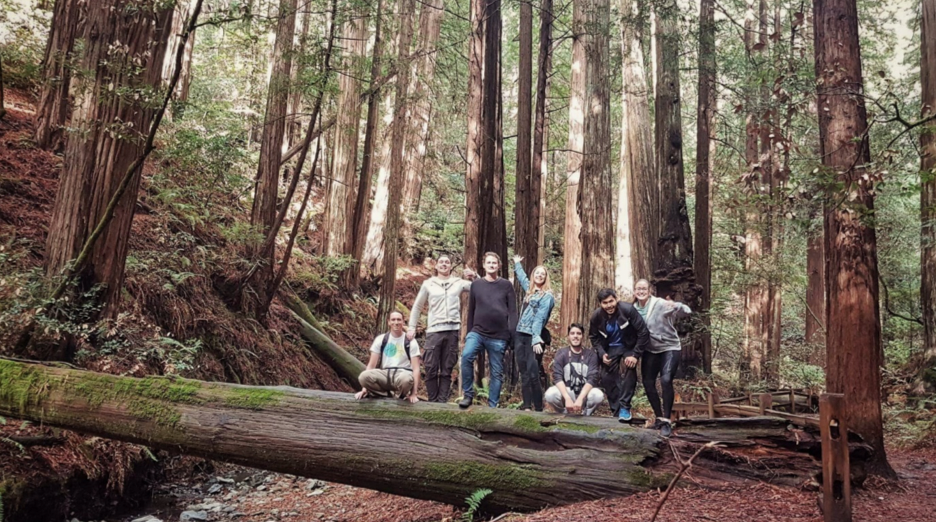
The students’ perspective on the ME310 Global Kick Off
- Post by: Christian Johansson
- 1st December 2017
- No Comment
As part of the ME310 project with Stanford University and Volvo Construction Equipment, the students are required to collaborate very closely across a vast distance of both many miles and time zones. However, on three occasions during the eight-month project the students meet in person to do design activities in a collocated setting.
In mid-November the Swedish team from BTH traveled to Stanford for the global project kick-off. During this week the team created their first Critical Experience Prototype (CEP). The CEP involved designing an Experience that that helps answer a critical question about the users. It does not (necessarily) involve building a fully functionality prototype but rather to build the actual experience of the prototype, meaning that the emphasis is on the user’s interaction with the prototype. There can be extensive use of so called “smoke and mirrors” in the spirit of Harry Houdini. Below follow some experiences as reported by the students.
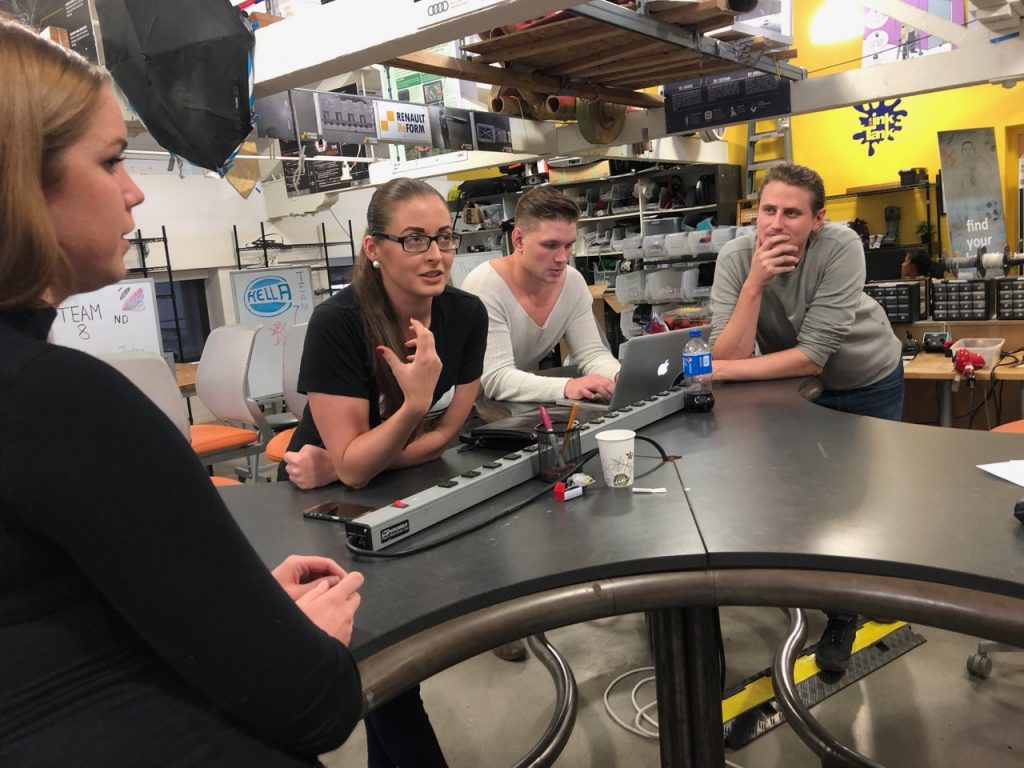
The first day started with the students meeting up to get acquainted over first some breakfast and then a tour of Stanford’s campus and the d.school. They then got off to a start in the loft to inform each other and the liaisons of the progress so far. As Daniel Larmark recalls;
“We had a big room for all the global teams to work in which was called “the loft”, my first thought about this space was; “cool, why don’t we have this at BTH?” It was an open solution with strategic placed “workbenches”, one for each team. At every workspace, there was a screen for screen sharing, in the roof there were old projects and everything just “screamed” creativity. I personally loved the place, all the teams mingled and talked to each other”

Natalia Baraslievska continues;
“I especially liked the space that we had at Stanford. It had a lot of tools you could use for creation and the atmosphere was great.”
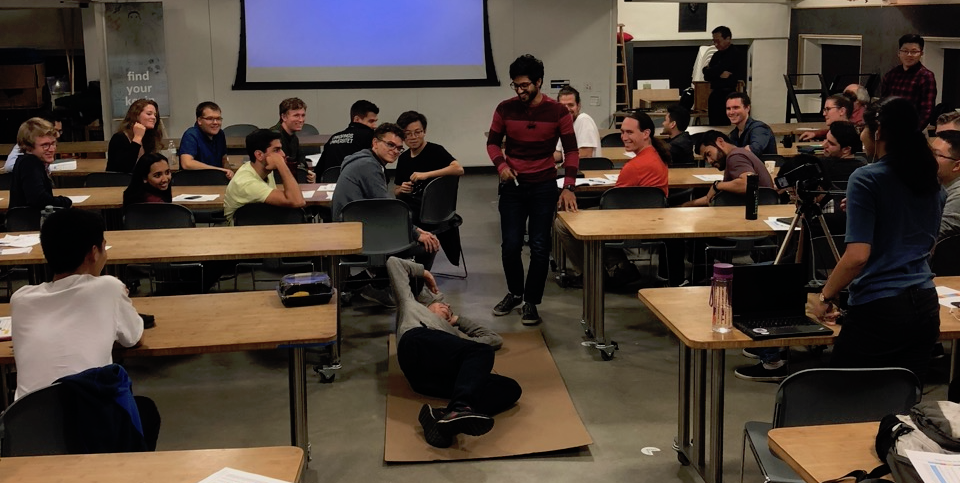
The students got to take part in a lecture about self-efficacy as well as how to make their first persona.

The official activities of the global kick-off started with Super-SUDS where all global teams and students convened in a slightly informal session (SUDS is an abbreviation for Slightly Unorganized Design Session).
“The day ended with super SUDS, where we had some short lectures about hitting rock bottom, self-efficacy, introduction to critical experience prototyping and personas, which was what we were going to work with the coming week. The night ended with some food and beers at the loft,” says Jennie Karlsson.
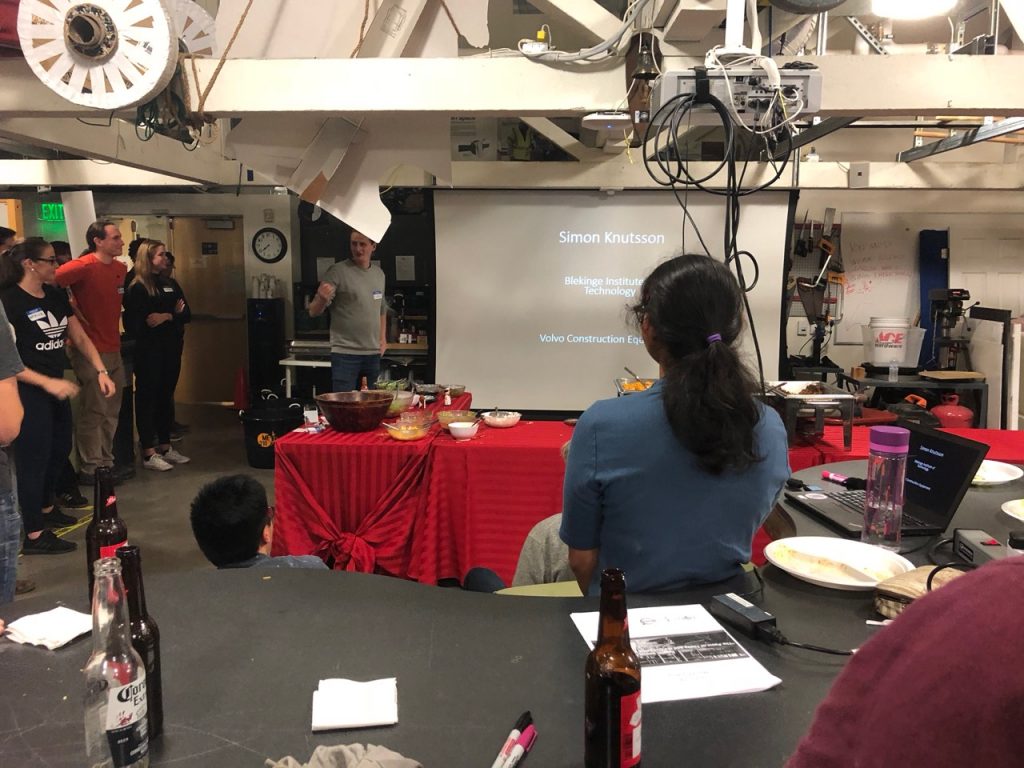


The second day started with Needfinding for the whole team together at a nearby construction site.
“The whole team went to gather information about what the current situation of the workers was. The main findings were that commuting was a big issue, as well as the construction site not being a very attractive industry for future workers. These, as well as previous issues found by the US team, were the issues we started brainstorming about, which lead to the CEP being about remote operating construction equipment,” says Jennie.

“This was a good “team building” thing to do, to go out and actually do something together rather then only look at what the information and data they had collected before we arrived at Stanford,” says Daniel.
Simon Knutsson fills in about the differences between Swedish and American construction sites;
“The visit to the road construction site made me realize that they do things very differently in America. I have never seen so many boots on the ground in terms of manual labour in Sweden.”
From there on the students started planning for their Critical Experience Prototype. Over the weekend they took some time out for team building and further work on the CEP.
“The things we did together included both visiting the Golden Gate bridge, a must see for everyone visiting and the famous Redwood trees at Muir national park,” says Simon.

The new week started with a design exercise, instrumented by the teaching team from BTH. The students got to try out doing design work and problem solving in a simulated distributed setting to gain experience and appreciation of the challenges with working over a distance. Practically they were asked to build a LEGO car kit, where one half of the team had the parts and the other had the instructions.
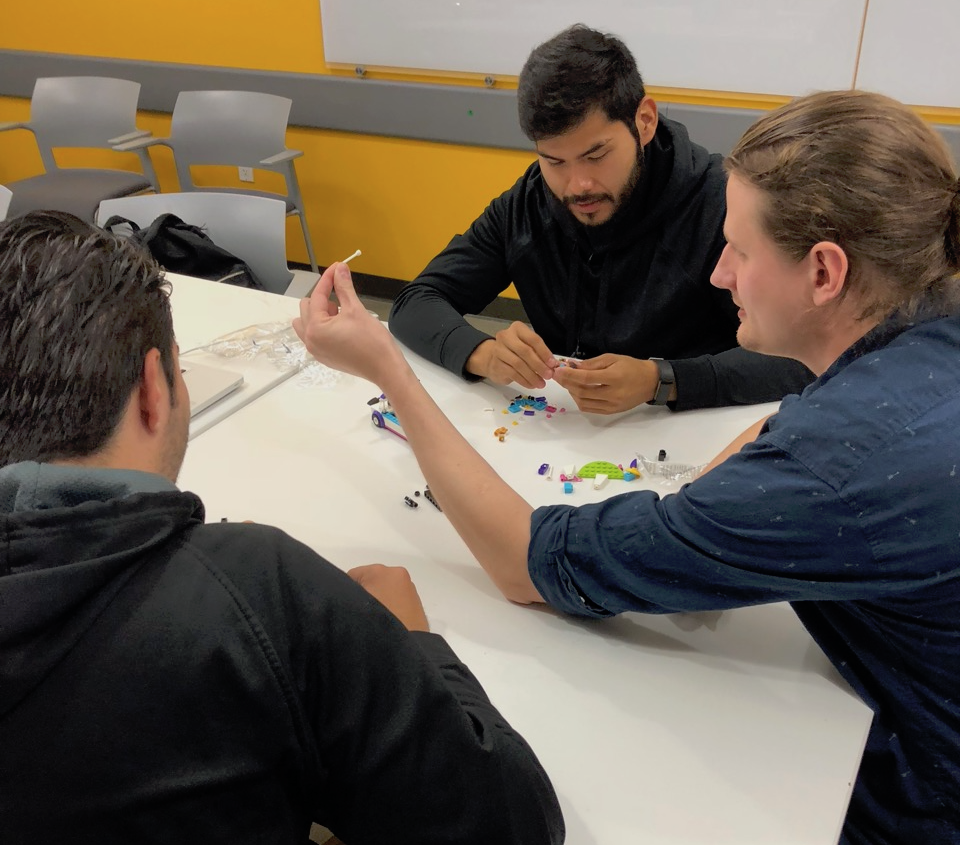

“We continuously stress and push the importance of having deep integration between the student teams also when they are going to be geographically distributed. With the use of distributed technologies engineers have the opportunity to work effectively around the clock, but the main challenge lies in getting effective procedures and routines to work together intimately although you are many miles apart,” says Christian Johansson, who is faculty teacher.

To wrap up the Critical Experience prototype, the students spent substantial time to allow users to interact with machines (a remote-controlled car platform was used) in a remote setting with various usage scenarios being tested. Jennie explains;
“The last days was all about conducting the CEP tests, where we wanted to answer how remote operating impacted work performance. We did this by setting up a “remote work site” where the user had to operate a vehicle through a course. The user had different views of the vehicle on computer screens, and had to perform different tasks on the courses, while we measured time, number of accidents, accuracy and also interviewed them about their experience of the remote work stations versus operating the vehicle while standing in the same room.”

“The most fun part about the visit was that we instantly started to create things together in the team. Even though the tests and pretotypes we built might not be the end product we are going with, I feel that it was really good that we initiated the creative process and started to collaborate with each other. We put in long hours and managed to simulate certain experiences for users, which I think that we should be proud of,” says Natalia.

“The long working hours while creating the CEP and producing the results gave me a hint that this team can produce wonders if we only keep the pace up,” says Simon.
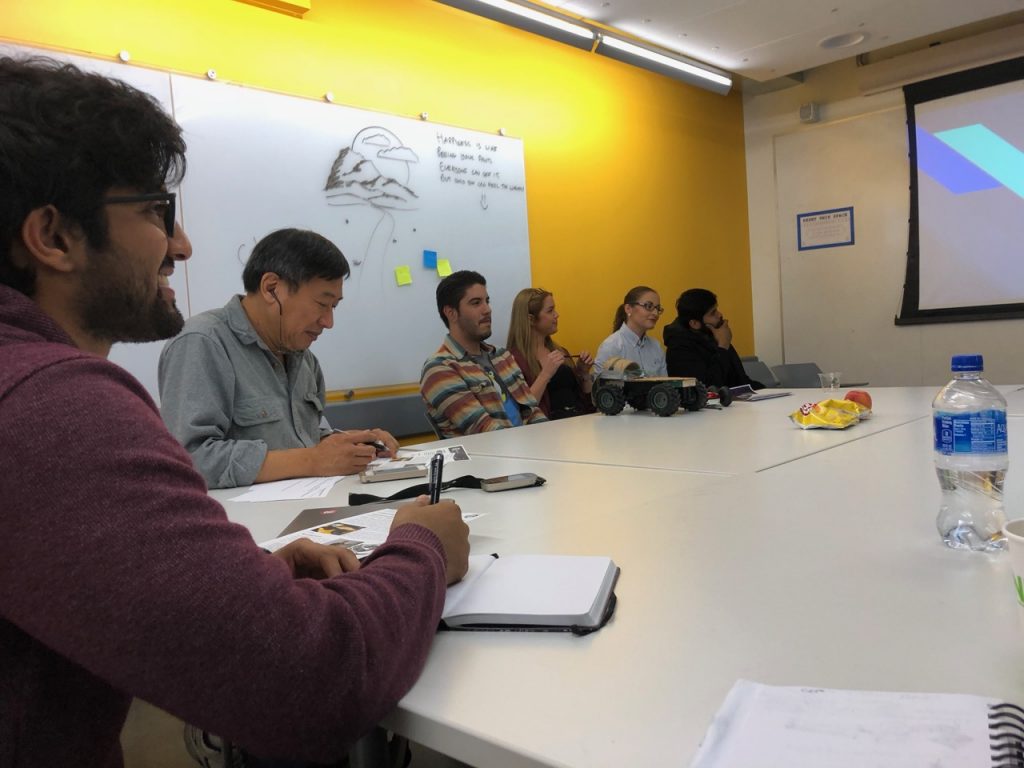
On the final day the students presented their findings and lessons learned to the Teaching Teams and the liaisons from Volvo Construction Equipment. Feedback was both positive and constructive. Simon reflects on the prototyping;
“For the CEP I felt great pride in what we managed to produce in the short amount of time at Stanford like an awesome remotely controlled vehicle.”
Jenny Elfsberg is liaison from Volvo Construction joining the kickoff together with Martin Frank;
“The team presented their first iteration result for the teaching team and showed they have insights and empathy for our industry’s users already,” says Jenny.
All in all, the week was a success with a productive start to the project and some good team building.
“The team spirit also built and became stronger due to late working hours with much laughter and crazy sessions. We built a strong bond together which helped us to create a good CEP and trust to each other,” says Daniel.
The teaching team also reflects that the kick-off week has provided a successful start to the project;
“The Stanford campus setting is perfect for the students to come together as one unit. Engaging each other in new experiences be it them academic or leisure, leads to building trust and psychological safety critical to developing a creatively confident team. Our group succeeded in all regards by leaning into the design and social activities. As a teaching team we are excited to see how they will progress throughout the development of the project,” says culture coach Ryan Ruvald.
[dqr_code post_id=”5304″]
